Vietnamese Desserts: Top 10 Traditional Sweets You Must Try
Although Vietnam’s gastronomic scene is sometimes praised for its vivid tastes, did you know that the nation also boasts a wonderful range of traditional sweets and desserts? With each area adding their unique flavor, Vietnamese desserts combine taste, texture, and history. Allow MOTOGO Tours to explore the particular appeal they offer!
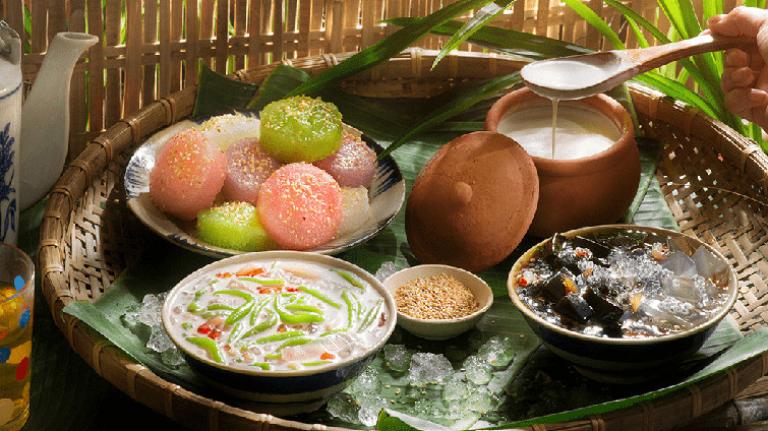
The Unique Charm of Vietnamese Desserts
Vietnamese sweets are notable for their flavor as well as for the narrative they convey. Every mouthful provides a window into the cultural legacy of the Vietnamese people, where food is more than just food—it’s a link to their customs and past.
Cultural Influence on Vietnamese Desserts
The lengthy history of commerce and connection Vietnam has with other nations shapes its desserts quite strongly. Many sweets have elements of Chinese, French, and Cambodian tastes, yet each stays clearly Vietnamese because of the utilization of locally grown ingredients. For example, sweets like banh flan (caramel custard) brought about during the French colonial era were accepted and changed utilizing traditional Vietnamese ingredients like coconut milk.

Variations in Vietnamese Desserts: Regional
Vietnam boasts a variety of scenery, and its cuisine—especially desserts—also reflects this similar range. While the south, shaped by its closeness to the Mekong Delta, creates richer, sweeter desserts like che (sweet soups), the north of Vietnam prefers more subdued, less sweet desserts like banh troi (floating rice cakes). With its royal gastronomic legacy, central Vietnam sometimes offers more complex and finely crafted desserts.
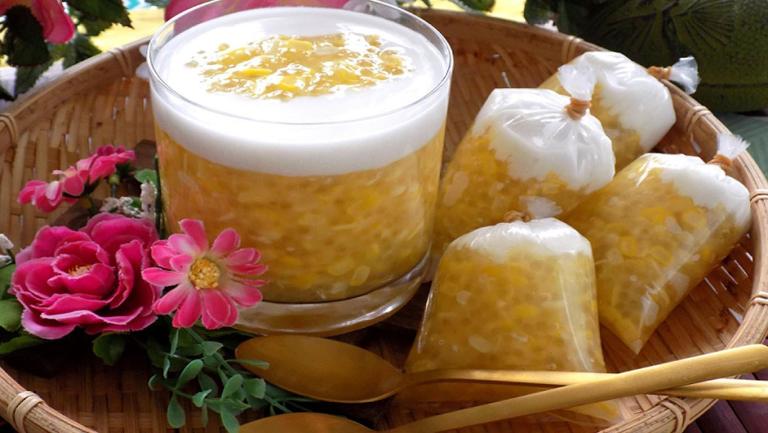
Traditional Ingredients in Vietnamese Desserts
Coconut – The Star Ingredient
Coconut is among the most recognizable component in Vietnamese sweets. From shredded coconut to coconut milk, this adaptable ingredient is utilized in a range of sweets bringing a creamy richness that exactly counteracts the sweetness. Coconut is essential in both banh khoai mi nuong (baked cassava cake) and che chuoi, banana coconut pudding.
Sticky Rice – A Staple of Sweetness
Many Vietnamese desserts also feature sticky rice as a basic ingredient. Popular delicacies like banh tet (sticky rice cake) and banh bo (steamed rice cake) are built upon it. Sticky rice is a favorite in both sweet and savory meals since its naturally glutinous texture helps it to absorb flavors like coconut milk.
Mung Beans – A Versatile Ingredient
Vietnamese desserts commonly feature mung beans for their subdued taste and silky texture. Mung beans are a basic ingredient in many traditional desserts whether cooked boiled in sweet soups like che dau xanh (mung bean sweet soup) or mashed into a sweet filling for cakes like banh da lon.
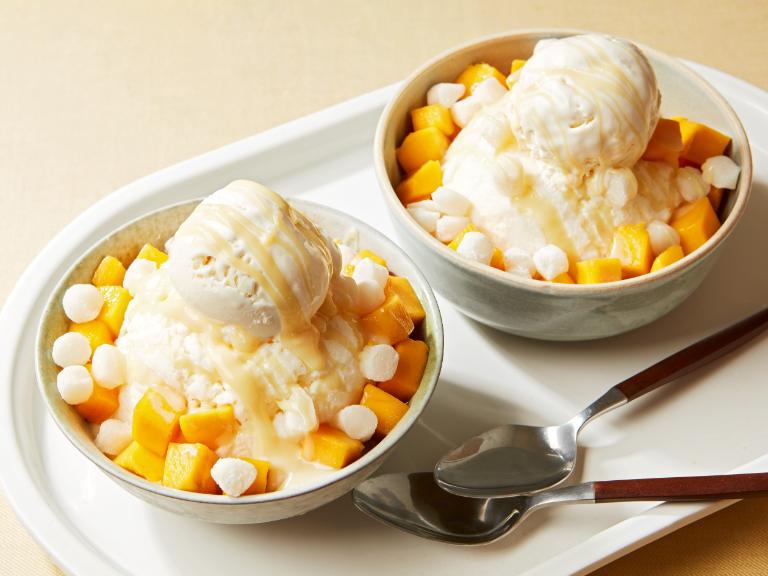
Top 10 Must-Try Vietnamese Desserts
Offering something for every sweet taste, Vietnam’s dessert scene combines textures, flavors, and visual appeal. You really should try 10 of the most well-known and iconic Vietnamese desserts shown here in great detail.
1. Che (Vietnamese Sweet Soup)
Known locally as “chè,” Vietnamese sweet soup is a renowned classic dish with a pleasant taste and texture explosion. Made from a variety of ingredients—beans, fruits, nuts, and glutinous rice—this cool delicacy is adaptable for individuals with a sweet craving, particularly on a warm day.
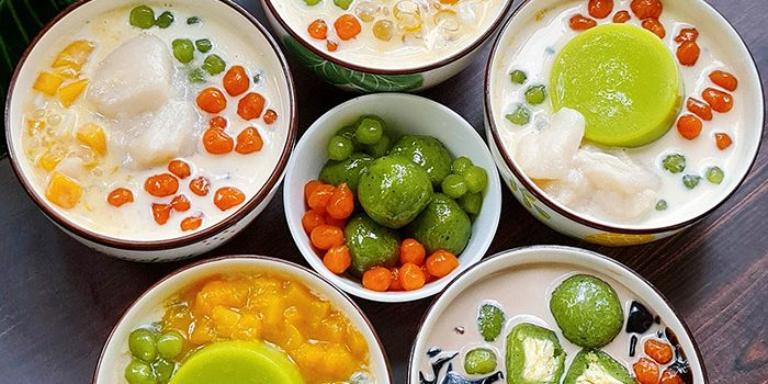
Among the several varieties of chè, two particularly stand out for their distinctive tastes: Chè Thái, which blends tropical fruits with rich coconut milk, and Chè Ba Màu, a vivid mix of three different beans. Whether you’re dining in a nearby restaurant, snatching a quick lunch from a street vendor, or meandering through busy markets, chè is a must-try dessert that will surely sweeten your Vietnamese trip.
2. Banh Cam (Vietnamese Sesame Balls)
Deep-fried sesame balls loaded with sweet mung bean paste, Banh Cam is crispy on the outside and chewy on the inside. This dish has a nutty taste from the golden, crispy sesame seeds on the outside; the chewy rice flour shell and silky mung bean inside create a fantastic contrast in texture. Popular street food snack Banh Cam goes especially nicely with a cup of hot tea.
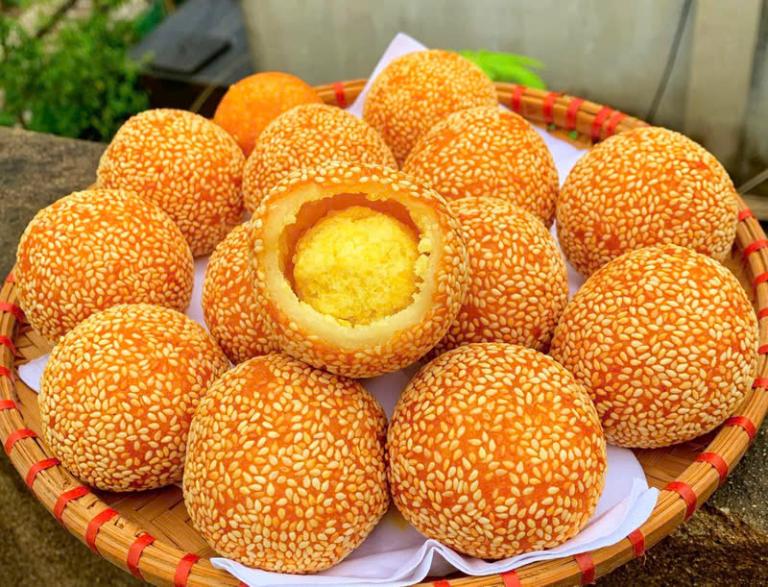
3. Che Troi Nuoc (Sticky Rice Balls in Ginger Syrup)
Made of soft, chewy sticky rice balls stuffed with sweet mung bean paste, Che Troi Nuoc is a soothing treat set floating in a fragrant ginger syrup. The syrup is flavored with the warmth of fresh ginger, which balances the sweetness exactly; the rice balls are boiled until they have a wonderful, melt-in-your-mouth feel. Considered as a symbol of family unity in Vietnamese society, this dish is commonly consumed on special events or during cooler seasons.
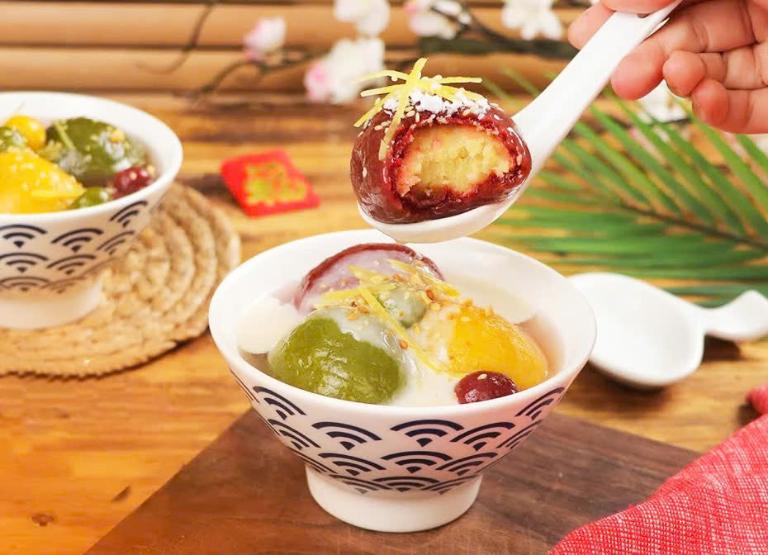
4. Banh Flan (Vietnamese Caramel Custard)
Vietnam’s interpretation of caramel custard—a dessert influenced by French cuisine—is banh flan. But the inclusion of coconut milk gives the creamy custard a tropical richness that distinguishes Vietnamese flan. On top, the caramel sauce offers a small bitterness to counter the delicious custard basis. Banh flan is sometimes presented with a strong dose of Vietnamese coffee for a further Vietnamese touch, creating a bittersweet contrast that accentuates the taste.
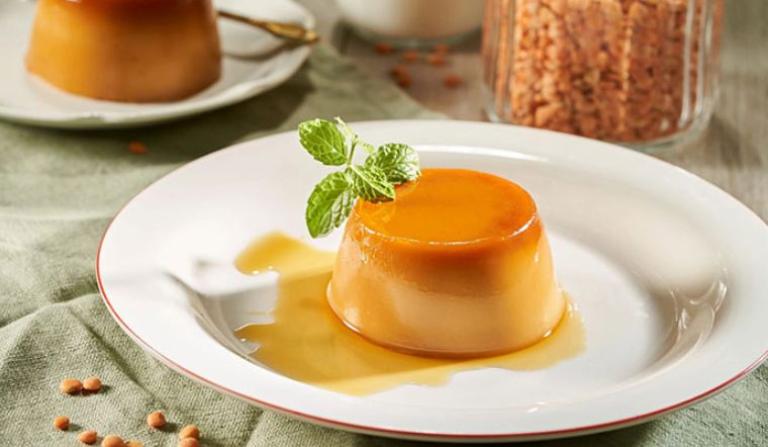
5. Che Chuoi (Banana Coconut Pudding)
Made with ripe bananas cooked in rich coconut milk, tapioca pearls, and often topped with toasted peanuts, Che Chuoi is a soothing treat. While the tapioca pearls have a chewy texture that makes this dish rather pleasant, the sweetness of the bananas complements the creaminess of the coconut milk quite nicely. Serving warm or cold, this adaptable meal is a favourite in all seasons

6. Banh Da Lon (Layered Rice Cake)
Made from layers of mung bean paste and sticky rice flour, banh da lon is a steaming treat. Usually flavored with pandan (which produces a lovely green color) or taro, each layer adds taste and visual appeal to a delicacy. The cake is just slightly chewy, and the alternating mung bean and pandan layers offer a delicate sweet harmony. Often eaten during tea time, banh da Lon is presented in little squares.
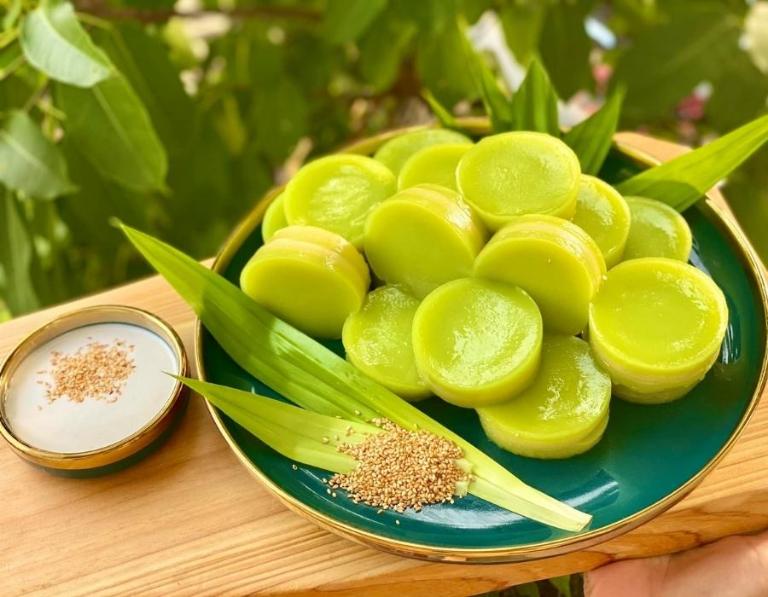
7. Banh Bo (Steamed Rice Cake)
Made from rice flour, yeast, and coconut milk, the fluffy and airy cake known as banh bo Steam cooking the cakes produces a soft, spongy texture with a faint crunch. Often brilliantly colored in white, pink, green, or yellow, they are as entertaining to view as they are to eat. Usually presented with a dipping sauce created from coconut milk and sugar, Banh Bo’s subdued sweetness accentuates its flavor.
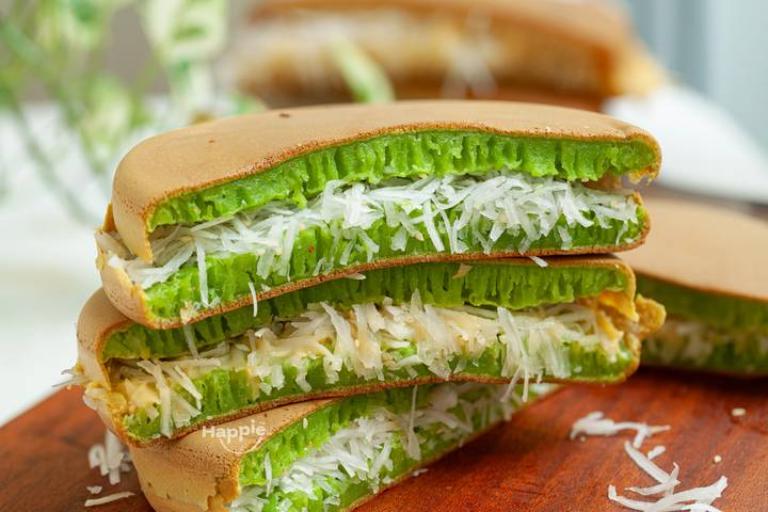
8. Kem Xoi (Sticky Rice Ice Cream)
Top shredded coconut and roasted peanuts, this delicious fusion treat blends coconut ice cream with sticky rice. The somewhat chewy texture of the sticky rice complements the smooth, creamy ice cream really brilliantly. Both residents and visitors love this dish since it provides the ideal mix of warm and cold ingredients together with crunchy and chewy textures.

9. Banh Khoai Mi Nuong (Baked Cassava Cake)
Made from grated cassava, coconut milk, and sugar, banh khoai mi nong is a rich, chewy cake. The coconut milk lends richness and moisture; the cassava gives the cake a starchy, somewhat sweet taste. Usually presented in thick slices, this baked treat is quite filling because to its strong texture. It’s a standard treat for holidays and family get-togethers.

10. Sua chua nep cam (Yogurt with Fermented Sticky Rice )
Known in Vietnamese as “Sua chua nep cam,” yogurt with fermented sticky rice is a treasured traditional treat with a wonderful balance of tastes. Yogurt’s acidic creaminess complements the subdued sweetness and faint tanginess of fermented sticky rice to create a rather unusual gastronomic sensation. Locals and guests alike love “Sua chua nep cam” because of the way creamy, sweet, and sour interact.
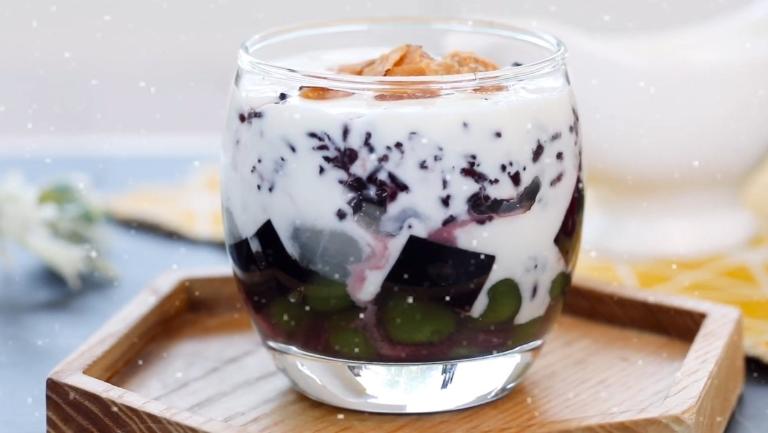
The Role of Vietnamese Desserts in Festivals
Many holidays and events revolve on Vietnamese desserts, which are also rather significant.Usually made with great care, these delicacies are said to represent wealth, happiness, and family harmony.
Natural Ingredients for a Healthier Treat
The fact that Vietnamese desserts rely on whole, natural ingredients makes them among the better ones. Rich in nutrients are coconut, mung beans, cassava, sticky rice. Mung beans, for example, are high in protein and fiber, but coconut has good fats. Using fresh fruit, including bananas, in desserts like che chuoi also supplies vital minerals and vitamins, so making these sweets not only delicious but also nouraging.
Balanced Sweetness and Nutritional Value
Many times, Vietnamese desserts balance taste with nutritional value. Most Vietnamese sweets contain a gentler degree of sugar than many Western desserts, which can be unduly sweet, therefore they are more pleasant and simpler to digest. Many sweets, including red bean sweet soup, include grains and legumes, therefore providing a combination of complex carbohydrates and plant-based proteins.
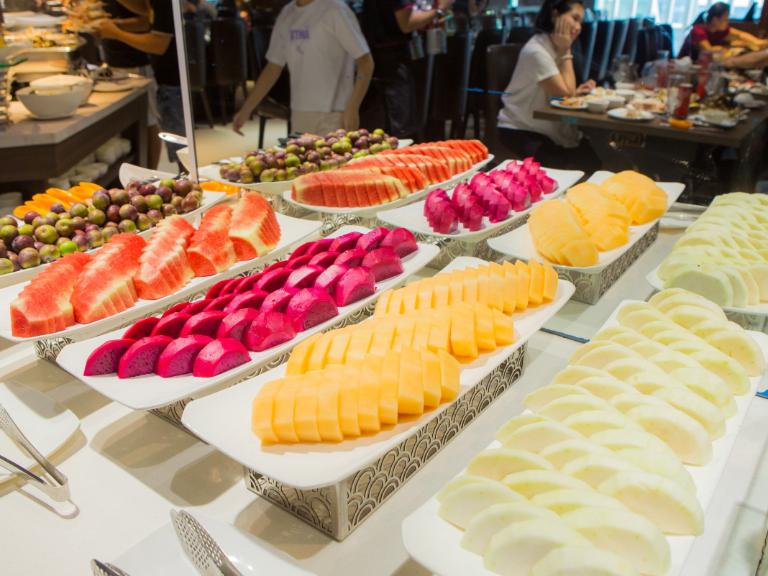
Perfectly balanced in sweet, salty, and textural terms, Vietnamese sweets are a mainstay of the nation’s cuisine. These desserts, which have roots firmly ingrained in Vietnam’s rich cultural legacy, are not only a pleasure for your taste receptors but also a portal to knowledge of the customs, celebrations, and daily lives of the Vietnamese people.







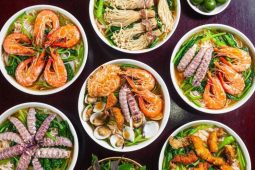

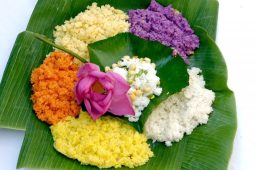
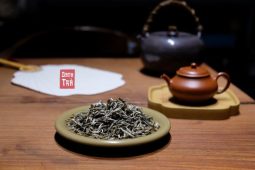
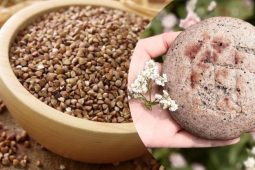
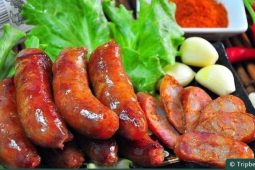
Be the first to comment!